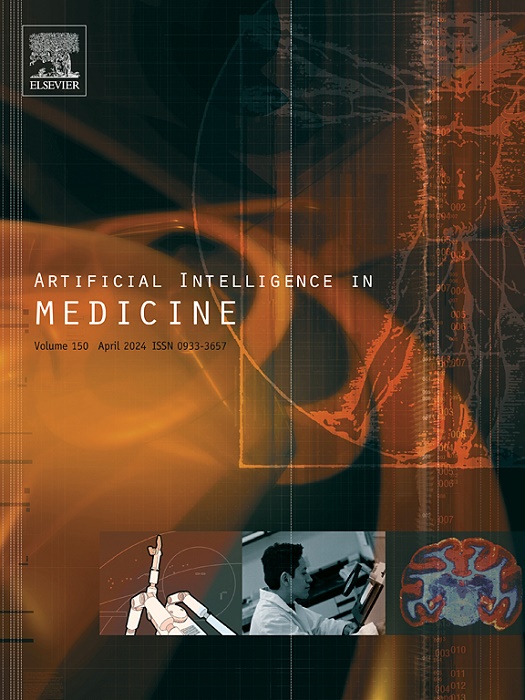一种用于持续膝骨关节炎严重程度分级的人工智能系统:一种基于少量标签的异常检测方法
IF 6.2
2区 医学
Q1 COMPUTER SCIENCE, ARTIFICIAL INTELLIGENCE
引用次数: 0
摘要
现有的膝关节骨关节炎(OA)分级系统的诊断准确性和主观性一直是一个持续争论和关注的主题。现有的自动化解决方案被训练来模拟这些不完美的系统,同时也依赖于大型带注释的数据库进行完全监督的训练。这项工作提出了一种基于异常检测(AD)原理的三阶段方法,用于膝关节OA的自动连续分级;学习健康膝关节x光片的鲁棒表示,并根据其到正常中心的距离对疾病严重程度进行分级。在第一阶段,提出了ss - few,这是一种学习“正常”表示的自监督广告技术,只需要健康受试者的例子和现有方法所需标签的3%。在第二阶段,该模型用于将未标记的数据子集伪标记为“正常”或“异常”,然后使用CLIP对伪标签进行去噪。最后阶段涉及使用提出的双中心表示学习(DCRL)对标记和伪标记数据进行再训练,该学习方法学习两个表示空间的中心;正常和异常。然后根据到学习中心的距离对疾病的严重程度进行分级。提出的方法在OA检测方面比现有技术高出24%,疾病严重程度评分与Kellgren-Lawrence评分系统相关,与人类专家的表现相同。代码可从https://github.com/niamhbelton/SS-FewSOME_Disease_Severity_Knee_Osteoarthritis获得。本文章由计算机程序翻译,如有差异,请以英文原文为准。
An AI system for continuous knee osteoarthritis severity grading: An anomaly detection inspired approach with few labels
The diagnostic accuracy and subjectivity of existing Knee Osteoarthritis (OA) ordinal grading systems has been a subject of on-going debate and concern. Existing automated solutions are trained to emulate these imperfect systems, whilst also being reliant on large annotated databases for fully-supervised training. This work proposes a three stage approach for automated continuous grading of knee OA that is built upon the principles of Anomaly Detection (AD); learning a robust representation of healthy knee X-rays and grading disease severity based on its distance to the centre of normality. In the first stage, SS-FewSOME is proposed, a self-supervised AD technique that learns the ‘normal’ representation, requiring only examples of healthy subjects and of the labels that existing methods require. In the second stage, this model is used to pseudo label a subset of unlabelled data as ‘normal’ or ‘anomalous’, followed by denoising of pseudo labels with CLIP. The final stage involves retraining on labelled and pseudo labelled data using the proposed Dual Centre Representation Learning (DCRL) which learns the centres of two representation spaces; normal and anomalous. Disease severity is then graded based on the distance to the learned centres. The proposed methodology outperforms existing techniques by margins of up to 24% in terms of OA detection and the disease severity scores correlate with the Kellgren-Lawrence grading system at the same level as human expert performance. Code available at https://github.com/niamhbelton/SS-FewSOME_Disease_Severity_Knee_Osteoarthritis.
求助全文
通过发布文献求助,成功后即可免费获取论文全文。
去求助
来源期刊

Artificial Intelligence in Medicine
工程技术-工程:生物医学
CiteScore
15.00
自引率
2.70%
发文量
143
审稿时长
6.3 months
期刊介绍:
Artificial Intelligence in Medicine publishes original articles from a wide variety of interdisciplinary perspectives concerning the theory and practice of artificial intelligence (AI) in medicine, medically-oriented human biology, and health care.
Artificial intelligence in medicine may be characterized as the scientific discipline pertaining to research studies, projects, and applications that aim at supporting decision-based medical tasks through knowledge- and/or data-intensive computer-based solutions that ultimately support and improve the performance of a human care provider.
 求助内容:
求助内容: 应助结果提醒方式:
应助结果提醒方式:


